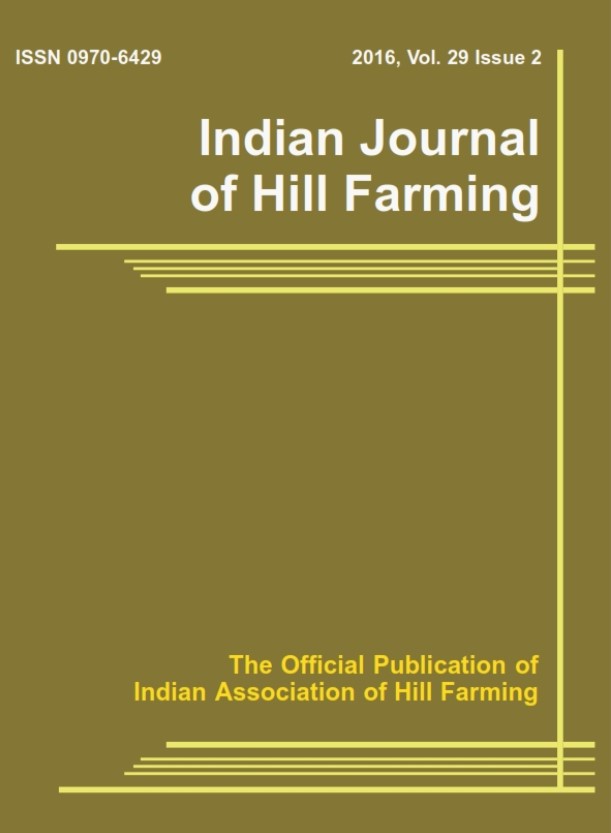Evaluation of Traditional Jhum Management and Crop Production in Kohima, Nagaland
Keywords:
Cropping system, Fallow period, Rice, Weeds management.Abstract
Although, jhum cultivation is a major traditional agricultural practice in Nagaland, little is documented about such practice. Understanding management practices is necessary for sustainable agricultural land use to improve food production. This study evaluated and compared the traditional jhum cultivation in Mima and Kohima villages for the first year jhum cropping season of 2017. Qualitative and quantitative data were collected through field interviews with twenty farmers and on-site measurements from each farm. Data were collected for farm size, fallow period, cropping system, time investment on farm management activities and rice yield. The average farm size of Kohima village was bigger (0.38 ha) than Mima village (0.20 ha). Both the villages practice mixed cropping with an average fallow period of 13 years. The total time investment on farm management throughout the cropping season was 83% greater for Kohima compared to Mima village. However, the average yield of rice was 62% greater for Mima than Kohima village. Slightly longer duration of fallow period, relatively more time investment for weeds management and longer growing period of rice in Mima likely contributed to greater yield. Results from this study suggest that better approaches to management such as extended fallow management, appropriate variety selection and proper weeds management can potentially contribute to better crop yield.




